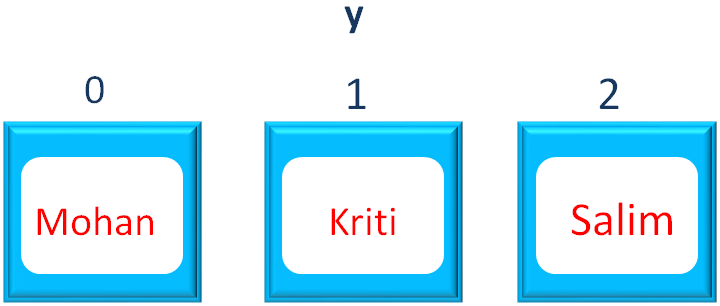

As we have seen the implementations of a List are :
Let us see the ArrayList implementation,
import java.util.ArrayList;
import java.util.List;
public class MyApplication {
public static void main(String[] args) {
List x = new ArrayList<>();
x.add("Mohan");
x.add("Kriti");
x.add("Salim");
List y = new ArrayList<>(x);
for (String data : y) {
System.out.println(data);
}
}
}
So, in the above code we have created a List,
Listx = new ArrayList<>();
And initialised three names to the variable x,
x.add("Mohan");
x.add("Kriti");
x.add("Salim");Below is how the values are positioned in the List,

Then we have created a new List and passed the List x as parameter.
Listy = new ArrayList<>(x);
And the new List y gets all the values of the List x.

And we get the below output,